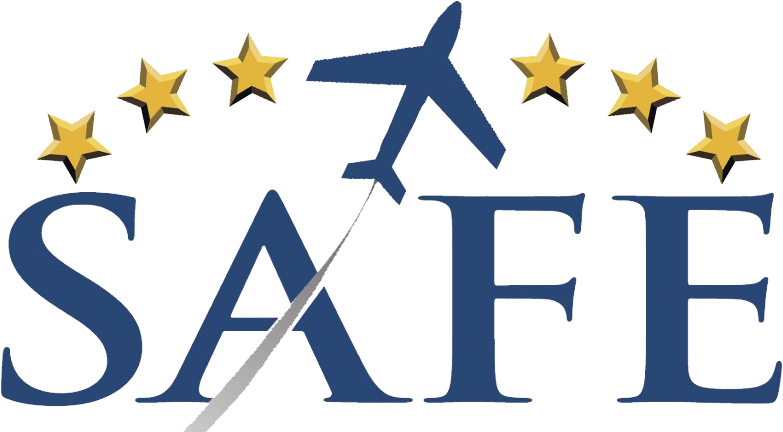We live in an age where we are told on a daily basis that more laws, stricter regulations, and the latest technology will keep us safe from harm. In regard to general aviation, we have more regulations and enhanced technology than ever before, but we still have a certain number of accidents every year attributed to human error. The FAA and NTSB are asking why. Pilots and flight instructors are asking why. The list of possible reasons why grows longer each year, and yet, accidents still occur.
It seems that nobody wants to actually consider the possibility that “a zero accident rate” is impossible to achieve. But that might be the case simply because of how the human mind works. Each of us perceives safety (and conversely, danger) in our own particular way. Some pilots have no perception of danger because they lack the knowledge and experience necessary to understand the inherent risks associated with flying. Other pilots are aware of certain flight hazards, but believe those hazards are no threat because their airplane has the latest and greatest instruments and avionics. Many pilots do understand the hazards of flight, but have somehow convinced themselves nothing calamitous will ever happen to them.
In 2016, pilots have a wide range of useful instrumentation and technology available to them in the cockpit, but we still have accidents. Again, we must ask why. I still believe it goes back to human factors, which include inadequate risk assessment skills and false feelings of competency and/or proficiency.
Basic stall avoidance and stall recovery procedures must be demonstrated, not just talked about, to improve flight safety. Too many pilots are overly reliant on instruments and technology to keep them safe rather than a basic understanding of aerodynamics. An angle of attack indicator may be nice to have, but it should not be the only way a pilot can detect an impending stall. All the technology in the world can’t save a pilot from stalling the airplane if he/she doesn’t (a) recognize the wing(s) is no longer producing lift (hence, stalled) and (b) know the most basic fix, which is to reduce the wing’s angle of attack.
As a seasoned aviation educator and licensed mental health professional, I believe our efforts to enhance flight safety need to focus on teaching risk assessment skills and “best practices” in maintaining aircraft control. The laws of physics do not change with the installation of an angle of attack indicator or the latest Garmin. It still takes x-number of air molecules moving over the wings (or blades) to produce lift. Airplanes can still stall at any airspeed and any attitude. These are proven facts, not conjecture.
I’m a strong advocate for teaching pilots about aircraft control pressures and what they mean. How does the airplane control yoke “feel” in your hand? Is it heavy, stable, mushy? What is causing the controls to feel that way? While using a trim tab to adjust control pressure is necessary for larger aircraft, a pilot still should know the conditions under which the airplane controls feel heavy or mushy and what that may mean for safety of flight.
I also believe basic stall avoidance and stall recovery procedures must be demonstrated, not just talked about, to improve flight safety. Too many pilots are overly reliant on instruments and technology to keep them safe rather than a basic understanding of aerodynamics. An angle of attack indicator may be nice to have, but it should not be the only way a pilot can detect an impending stall. All the technology in the world can’t save a pilot from stalling the airplane if he/she doesn’t (a) recognize the wing(s) is no longer producing lift (hence, stalled) and (b) know the most basic fix, which is to reduce the wing’s angle of attack. Even with all the technology available in the Airbus 330, Air France Flight 447 crashed into the Atlantic Ocean on June 1, 2009, killing 228 people because the pilot did not recognize the airplane was in a stall.
While we can certainly teach safety concepts and risk assessment procedures in a classroom setting, the only way a pilot will learn how to truly recognize potential loss of control situations (requiring the implementation of those concepts and procedures) is by flying the aircraft. This is one reason why the current debate about the FAA changing the definition of “slow flight” is so important. The FAA’s new definition of slow flight does not allow a pilot to actually experience how the airplane reacts when flying in a potentially dangerous region of the airspeed envelope.
I believe a prudent flight instructor should not allow a student to solo who hasn’t experienced what the stall warning horn sounds like, how the airplane controls “feel” when the wings are stalled, and what the proper stall recovery procedures are. In my opinion, there is no substitution for the student actually practicing stall recovery and experiencing other simulated flight emergencies. Reading about it or watching a video are not the same thing as actual experience. I urge each of you to think about how you as an instructor can help ensure the safe flight of your students once you exit the cockpit.
Please “follow” our SAFE blog to receive notification of new articles and please write us a comment if you see a problem or want to contribute an article. We always need more input on aviation excellence or flight safety. There are many highly qualified SAFE members out there! If you are not yet a member, please Join SAFE and support our mission of generating aviation excellence in teaching and flying. Our amazing member benefits alone make this commitment worthwhile fun


